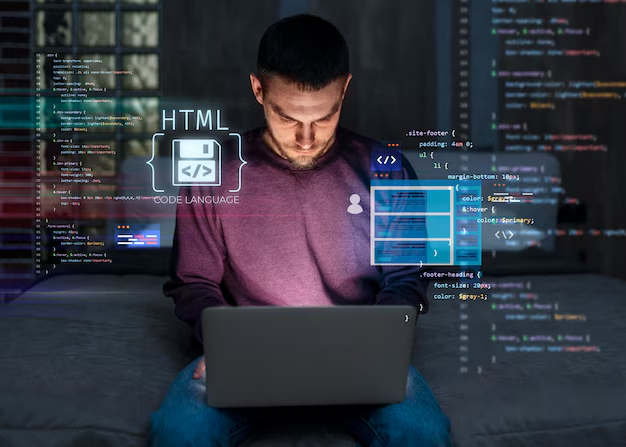In the fast-evolving landscape of software development, Conversational AI emerges as a pivotal domain, reshaping how humans interact with technology. Conversational AI, often hailed as the cornerstone of human-computer interaction, encapsulates a spectrum of technologies enabling machines to understand and respond to natural language inputs. However, beyond its conventional applications in chatbots and virtual assistants, Conversational AI heralds a profound transformation across industries, revolutionizing customer service, healthcare, finance, and beyond.
As we delve into the depths of Conversational AI's future, it's imperative to understand its roots and the trajectory it's poised to embark upon. Building upon existing technologies and harnessing novel advancements, the future of Conversational AI holds promises of seamless, intuitive interactions that blur the boundaries between humans and machines. In this article, we navigate through the currents of innovation, exploring the uncharted territories of Conversational AI's evolution and predicting the trends that will shape its landscape in the coming years.
Current State of Conversational AI
Overview of Existing Conversational AI Solutions
At present, Conversational AI solutions span a diverse array of platforms and technologies, each catering to unique use cases and industries. From rule-based chatbots to sophisticated neural network models, the spectrum of Conversational AI offerings continues to expand, fueled by advancements in natural language processing (NLP) and machine learning. Platforms like Trinetix exemplify the versatility of Conversational AI (https://www.trinetix.com/insights/conversational-ai-examples-and-use-cases), showcasing applications in customer support, sales assistance, and beyond.
Success Stories and Use Cases
Beyond the realm of theoretical discourse, real-world implementations of Conversational AI abound, demonstrating its tangible impact across industries. From enhancing customer engagement to streamlining internal workflows, organizations worldwide leverage Conversational AI to drive efficiency and innovation. By examining success stories across sectors such as healthcare, finance, and retail, we gain insights into the transformative potential of Conversational AI in addressing complex challenges and unlocking new opportunities.
Emerging Technologies Shaping the Future of Conversational AI
Natural Language Understanding (NLU) Advancements
The future of Conversational AI hinges on advancements in Natural Language Understanding (NLU), enabling machines to comprehend human language with unprecedented accuracy and nuance. Leveraging techniques such as deep learning and transfer learning, NLU models are poised to surpass current benchmarks, exhibiting a deeper understanding of context, sentiment, and intent. By harnessing large-scale datasets and refining algorithmic architectures, the next generation of NLU promises to bridge the gap between human and machine communication, ushering in an era of truly conversational interactions.
Contextual Understanding and Personalization
In the quest for more human-like interactions, Conversational AI systems are increasingly focusing on contextual understanding and personalization. Beyond mere transactional exchanges, future systems will possess the ability to maintain coherent dialogue flows across multiple interactions, adapting responses based on user history, preferences, and situational context. By leveraging contextual cues from past interactions and external data sources, Conversational AI systems will deliver tailored experiences that resonate with users on a deeply personal level, fostering stronger engagement and satisfaction.
Multi-Modal Capabilities
As technology progresses, the boundaries between different modes of interaction blur, paving the way for Conversational AI systems with multi-modal capabilities. Beyond traditional text-based interactions, future systems will seamlessly integrate voice, gestures, visuals, and even emotions, enabling richer and more immersive user experiences. Whether through voice assistants that understand non-verbal cues or chatbots that incorporate visual elements, multi-modal Conversational AI will redefine how humans interact with digital interfaces, transcending the limitations of traditional communication channels.
Ethical Considerations and Challenges
Data Privacy and Security
In the age of data-driven decision-making, ensuring the privacy and security of user data is paramount. Conversational AI systems, which often rely on vast amounts of personal information to deliver personalized experiences, must navigate the delicate balance between utility and privacy. Strategies such as federated learning and differential privacy offer promising avenues for preserving user privacy while still enabling model training on sensitive data. Moreover, robust encryption protocols and access controls can safeguard Conversational AI systems against malicious attacks and unauthorized access, instilling trust and confidence among users.
Bias and Fairness
As AI systems become increasingly integrated into everyday life, concerns surrounding algorithmic bias and fairness come to the forefront. Conversational AI, with its reliance on machine learning algorithms trained on biased datasets, is not immune to these challenges. Addressing bias in Conversational AI requires a multi-faceted approach, encompassing diverse representation in training data, algorithmic transparency, and ongoing bias monitoring and mitigation efforts. By actively combating bias and promoting fairness, developers can ensure that Conversational AI systems uphold ethical standards and contribute to a more equitable society.
Transparency and Accountability
In an era of algorithmic decision-making, transparency and accountability are essential pillars of responsible AI development. Conversational AI systems, which wield significant influence over user interactions and decision-making processes, must operate with a high degree of transparency and accountability. This entails providing users with clear explanations of how their data is used and processed, as well as mechanisms for recourse in case of errors or biases. By fostering transparency and accountability throughout the development lifecycle, developers can build trust with users and promote responsible AI adoption.
Impact on Software Development Practices
Evolution of Development Tools and Frameworks
The rise of Conversational AI necessitates a parallel evolution in development tools and frameworks tailored to its unique requirements. Traditional software development paradigms must adapt to accommodate the complexities of building conversational interfaces, encompassing aspects such as natural language processing, dialogue management, and integration with backend systems. Frameworks like Rasa and Dialogflow offer developers a suite of tools for building, training, and deploying Conversational AI applications, streamlining the development process and lowering the barrier to entry for aspiring conversational designers.
Collaborative Development Approaches
Building robust Conversational AI solutions requires interdisciplinary collaboration among developers, linguists, designers, and domain experts. Unlike traditional software projects, which may be driven primarily by technical considerations, Conversational AI development demands a holistic approach that incorporates linguistic nuances, user experience design principles, and domain-specific knowledge. By fostering cross-functional collaboration and embracing agile methodologies, teams can leverage diverse perspectives to iteratively refine and enhance Conversational AI applications, ensuring that they meet user needs and deliver meaningful value.
Integration with Existing Systems
Incorporating Conversational AI capabilities into existing software applications presents both opportunities and challenges for software developers. Seamless integration requires careful consideration of factors such as data interoperability, API compatibility, and user experience continuity. Application programming interfaces (APIs) and software development kits (SDKs) provided by Conversational AI platforms facilitate integration with popular development frameworks and programming languages, enabling developers to leverage existing infrastructure while augmenting it with conversational capabilities. By adopting a modular and extensible architecture, developers can future-proof their applications and adapt to evolving user preferences and technological trends.
Future Applications and Opportunities
Industry-Specific Applications
The future of Conversational AI is characterized by its diverse applications across a wide range of industries, each presenting unique opportunities for innovation and disruption. In healthcare, Conversational AI holds the promise of improving patient engagement, facilitating remote consultations, and assisting healthcare providers in clinical decision-making. In finance, virtual assistants powered by Conversational AI can streamline customer service, personalize financial advice, and detect fraudulent activities in real-time. By identifying industry-specific pain points and tailoring solutions to address them, developers can unlock new avenues for growth and differentiation in an increasingly competitive market landscape.
Novel Use Cases and Innovations
Beyond conventional applications, the future of Conversational AI is ripe with novel use cases and innovative applications that push the boundaries of what's possible. From virtual companions that provide emotional support and companionship to conversational agents that assist individuals with disabilities in daily tasks, the potential applications of Conversational AI are limited only by our imagination. By embracing creativity and experimentation, developers can pioneer groundbreaking solutions that revolutionize how we interact with technology and enrich our lives in unexpected ways.
Conclusion
As we embark on the journey into the future of Conversational AI, it's evident that the possibilities are as limitless as our imagination. By embracing emerging technologies, addressing ethical considerations, and reimagining software development practices, we can unlock the full potential of Conversational AI to transform industries, empower individuals, and shape the future of human-computer interaction. As software developers, let us seize this opportunity to pioneer the next frontier of innovation and usher in a new era of conversational computing. Together, we can build a future where humans and machines communicate seamlessly, intelligently, and empathetically, enriching lives and driving positive change in the world.


